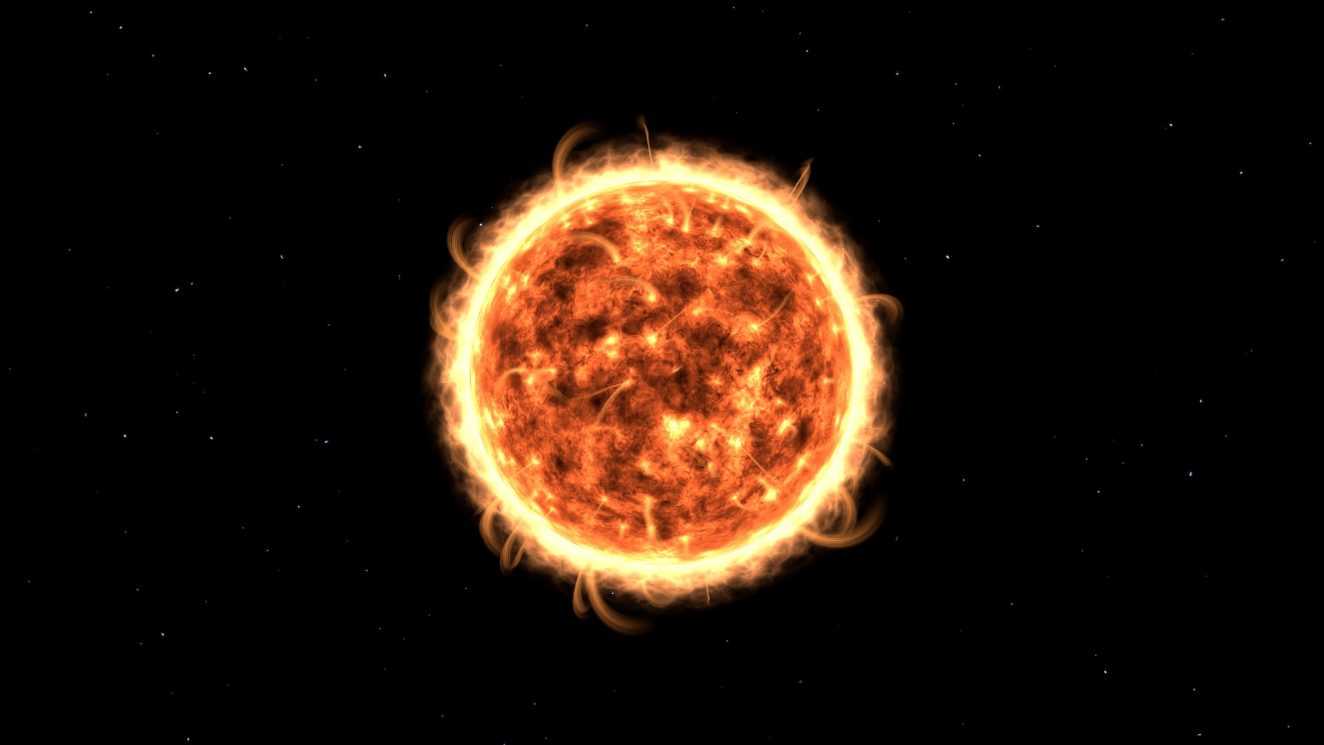The Sun, a celestial powerhouse, not only orchestrates the rhythm of life on Earth but also wields an undeniable influence over our planet’s climate. As we grapple with the complexities of climate change, it’s essential to understand the intricate dance between the Sun and Earth. In this exploration, we unravel the Sun’s role in climate change, debunking myths and shedding light on the scientific nuances that define this cosmic relationship.

The Solar Ballet: A Dance of Light and Shadows
At the heart of this cosmic ballet lies the Sun’s radiant energy, a life-affirming force that bathes our planet in light and warmth. Earth’s orbit around the Sun, coupled with subtle variations, has historically driven the ebb and flow of ice ages. However, the recent surge in global warming cannot be attributed to these cyclical orbital shifts or the Sun’s radiant consistency.
The Sun, much like an artist perfecting its craft, undergoes an 11-year solar cycle, marked by fluctuations in brightness and activity. During this cycle, solar radiation levels, the ejection of solar materials into space, and the appearance of sunspots and solar flares all experience dynamic changes. The ongoing Solar Cycle 25, which commenced in December 2019, has already surpassed early predictions, offering a glimpse into the Sun’s captivating variability. NASA’s Geospace Dynamics Constellation Mission, set for launch in 2027, promises to deepen our understanding during Solar Cycle 26.

Solar Cycles vs. Earth’s Climate
The Intergovernmental Panel on Climate Change (IPCC) emphasizes that while solar cycles contribute marginally to Earth’s climate, the primary driver of contemporary climate change is human-induced greenhouse gas emissions. Satellite observations spanning over 40 years reveal minimal fluctuations in the Sun’s energy output, accounting for less than a 0.1 percent variance. In contrast, the impact of human-generated greenhouse gases since 1750 has led to a warming over 270 times greater than solar-related influences during the same period.
As we navigate the intricacies of climate science, it becomes evident that the Sun’s sway over our climate is subtle compared to the potent influence of anthropogenic factors. The looming question: Can variations in solar activity usher in a ‘Grand Minimum’ and potentially alleviate global warming?
The Enigma of Grand Minimums
Currently witnessing a low in sunspot activity, scientists ponder whether this heralds a grand minimum—a period characterized by diminished solar magnetism, infrequent sunspots, and reduced ultraviolet radiation reaching Earth. The most notable historical example is the ‘Maunder Minimum’ during the Little Ice Age (1645-1715), marked by scarce sunspots.
Studies exploring the potential impact of another grand minimum on global surface temperatures suggest a modest cooling effect of up to 0.3 degrees Celsius. However, this cooling remains a temporary respite, offering a brief pause in the relentless march of human-induced global warming. The decline in energy reaching Earth during such an event could be offset by just three years of current carbon dioxide concentration growth.
Critically, the ‘Maunder Minimum’ and its cooling effects were likely shaped by multiple factors, including increased volcanic activity and shifts in ocean circulation, rather than solely the Sun’s diminished activity.
The Final Act: A Brief Interlude in the Cosmic Symphony
In essence, even a prolonged ‘Grand Solar Minimum’ or a nod to history in a ‘Maunder Minimum’ would provide only a fleeting and minimal deviation from human-induced warming. The symphony of Earth’s climate, intricately woven with solar nuances, takes center stage amid the crescendo of anthropogenic forces.

As we grapple with the challenges posed by climate change, it is imperative to acknowledge the Sun’s role as one player in this complex cosmic drama. Yet, the spotlight remains on our actions—on mitigating greenhouse gas emissions, fostering sustainable practices, and forging a harmonious relationship with the planet we call home. In this intricate interplay of celestial forces and human endeavors, the script of our climate’s future is still being written, and the cosmic ballet continues.





